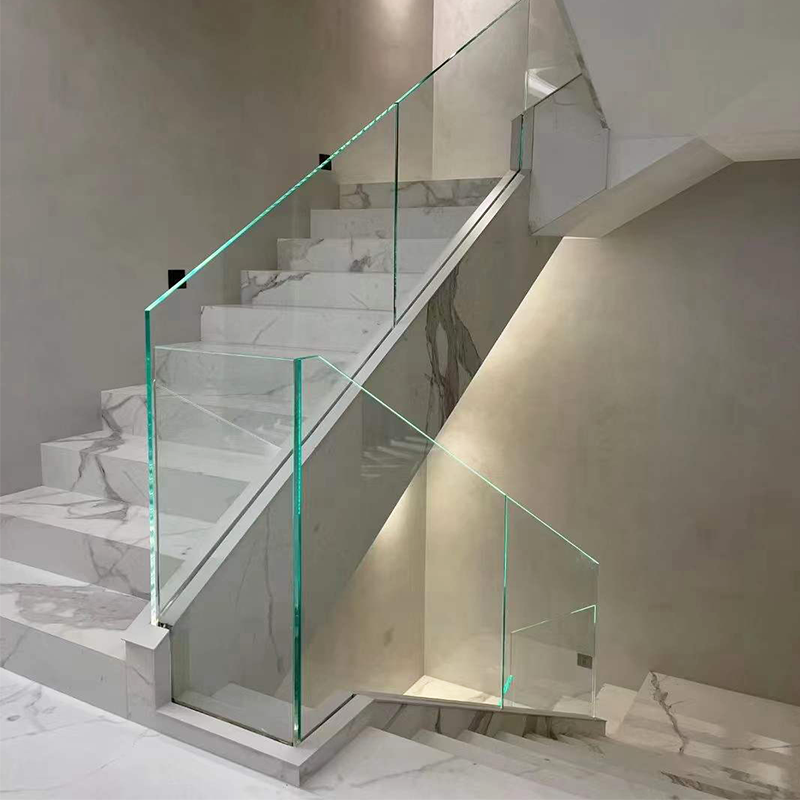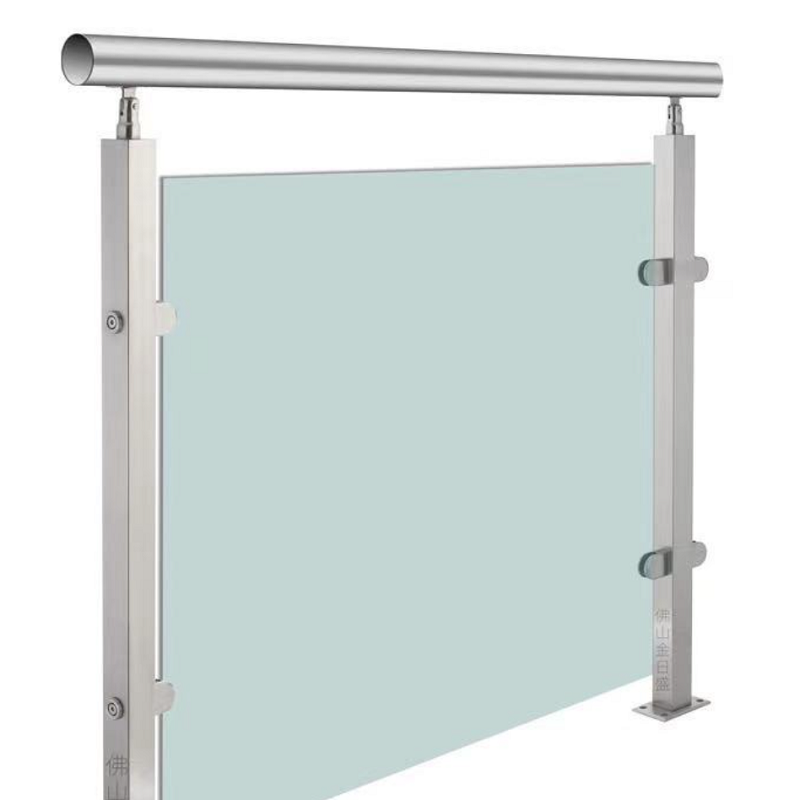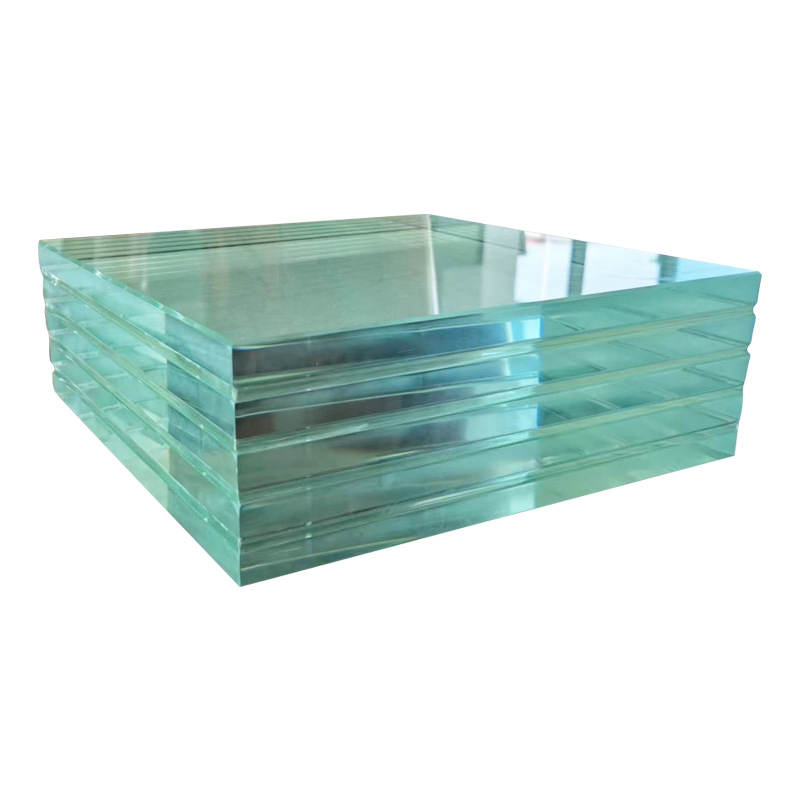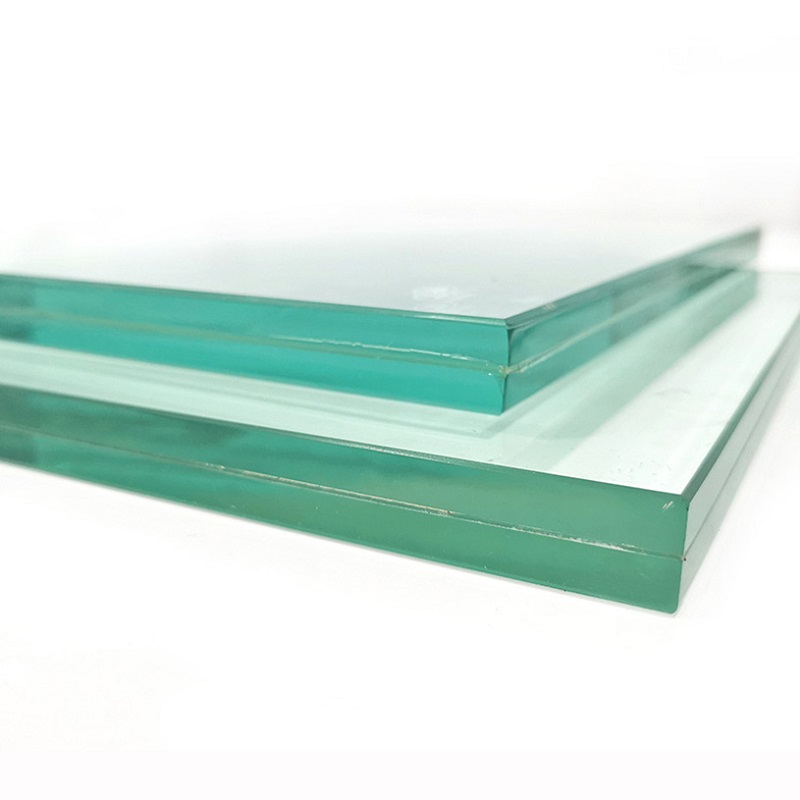Tempered Glass: A New Favorite for Stairs or a Hidden Risk? Unlocking Common Application Areas

In modern decoration and industrial production, tempered glass has gradually become a material of great concern due to its unique properties. When tempered glass is combined with stairs—an important facility in homes and public spaces—it not only brings a visual innovation but also triggers discussions on practicality and safety. Meanwhile, the application scope of tempered glass extends far beyond stairs; it plays a crucial role in multiple fields. Starting from the basic characteristics of tempered glass, this article will conduct an in-depth analysis of its advantages and disadvantages in stairs applications, and comprehensively review its common application areas to provide a comprehensive reference for readers.
1. Unveiling the Mystery of Tempered Glass
Tempered glass is not a simple upgrade of ordinary glass, but a type of prestressed glass processed through special techniques. Its production process involves multiple strict steps, including cutting, edge grinding, cleaning, heating, and quenching. The core principle is to heat ordinary glass to a temperature close to its softening point (usually 600 - 700℃), then quickly and evenly cool its surface with cold air or water mist. This process forms a strong compressive stress layer on the glass surface, while retaining tensile stress inside. This stress distribution endows tempered glass with performance far superior to ordinary glass.
From a historical perspective, the exploration of tempered glass can be traced back to the 17th century. At that time, a British scientist named Robert Hooke discovered that heating glass and then cooling it rapidly could increase its strength—this was the prototype of tempered glass technology. However, limited by the technical conditions of the time, this method was difficult to scale up for mass production, and the glass quality was unstable. It was not until the early 20th century that a German scientist, Friedrich Siemens, invented continuous tempered glass production equipment, laying the foundation for the industrial production of tempered glass. With the continuous iteration of technology, the current production process of tempered glass has become very mature. It can not only accurately control the stress distribution of glass but also produce products of different thicknesses and performances according to different needs, meeting diverse application scenarios.
Compared with ordinary glass, tempered glass has significant advantages. Firstly, it has high strength: its impact resistance is 3 - 5 times that of ordinary glass, and its bending strength is 2 - 3 times that of ordinary glass. Even when subjected to large external impacts, it is not easy to break. Secondly, it has good safety: once tempered glass breaks, it splits into numerous small particles without sharp edges. Unlike the sharp shards formed when ordinary glass breaks, these small particles can minimize harm to the human body. In addition, tempered glass also has good heat resistance; it can withstand large temperature changes and generally does not break under a temperature difference of about 200℃. This characteristic allows it to be used stably even in high-temperature environments.
2. When Tempered Glass Meets Stairs
In modern decoration design, people are increasingly pursuing a sense of spatial transparency and fashion, leading to the emergence of tempered glass stairs. The application of tempered glass to stairs breaks the limitations of traditional stair materials, injecting new vitality into spatial design, but it also faces some practical problems.
(1) The Unique Charm of Tempered Glass Stairs
The most prominent advantage of tempered glass stairs lies in their excellent visual effect. Tempered glass has the characteristics of transparency and lightness. Stairs made of it can greatly enhance the transparency of the space, making originally narrow or dim spaces more open and bright. Especially in duplex houses, loft apartments, or large public spaces, tempered glass stairs seem to float in the air. They not only do not block light but also enhance the sense of spatial hierarchy and design, becoming the visual focus of the entire space.
At the same time, tempered glass stairs have strong style adaptability. Whether it is modern minimalist, Nordic fresh, industrial style, or light luxury style, tempered glass stairscan be perfectly integrated. Designers can match handrails and step frames of different materials (such as metal handrails and wooden frames) according to the overall decoration style to create a variety of visual effects. For example, in a modern minimalist space, matching slender metal handrails can highlight the simplicity and refinement of tempered glass stairs; in an industrial-style space, matching rough black metal frames can show a unique personality and tension.
In addition, tempered glass stairs also have certain advantages in space utilization. Traditional stairs mostly use heavy materials such as concrete and solid wood, occupying a large area. In contrast, tempered glass stairs have a relatively lightweight structure and occupy less space, making them particularly suitable for small households. At the same time, the transparent tempered glass steps do not form a visual barrier like traditional stairs, which can make the space appear more coherent and reduce a sense of oppression.
(2) A Reliable Choice for Durability
Although tempered glass stairs look lightweight and thin, they are excellent in terms of durability, mainly due to the excellent performance of tempered glass itself. Firstly, the high strength of tempered glass ensures that stairs can withstand the pressure and impact during daily use. According to relevant standards, the thickness of tempered glass used for stairs is usually not less than 12mm. In some special scenarios, thicker glass or laminated tempered glass (composed of two or more layers of tempered glass with one or more layers of organic polymer interlayers in between) is also used. Tempered glass of this thickness can easily bear the weight of adults, and even when multiple people go up and down the stairs at the same time, it can remain stable.
Secondly, tempered glass has good wear resistance and can withstand friction during daily use. As a high-frequency contact part, stair steps are prone to scratches caused by shoe friction and item dragging. However, the surface of tempered glass is treated specially, resulting in high hardness, so it is not easy to have obvious scratches and can maintain a good appearance after long-term use. At the same time, tempered glass has good corrosion resistance; it does not rust easily like metal materials, nor does it get damp, deformed, or infested by insects like solid wood materials. Daily cleaning only requires wiping with a damp cloth, which greatly reduces the maintenance difficulty.
More importantly, the safety of tempered glass stairs is fully guaranteed. As mentioned earlier, tempered glass breaks into small particles without sharp edges. Even in the event of accidental breakage, it can avoid serious cutting injuries to the human body. For stairs—a facility with a certain height difference—safety is crucial, and this characteristic of tempered glass undoubtedly adds an important guarantee for the safe use of stairs. In addition, some tempered glass stairs are also equipped with anti-slip mats under the glass steps or undergo anti-slip treatment on the surface, further improving safety during use and reducing the risk of slipping.
(3) Practical Considerations in Use
Although tempered glass stairs have many advantages, there are some issues that need attention during actual use, which may affect the user experience and applicable scenarios.
Firstly, there are anti-slip performance and visual risks. The surface of tempered glass is smooth, and its anti-slip performance will decrease significantly when it is wet or dusty, easily causing people to slip. This problem is more prominent in humid environments, such as stairs near bathrooms or during the rainy season in southern China. In addition, while the transparent characteristic of tempered glass stairs brings a sense of transparency, it may also cause visual confusion. For the elderly, children, or people with visual impairments, the transparent steps may make it difficult for them to accurately judge the height and step position of the stairs, posing a risk of stepping empty. Even for adults with normal vision, the surface of tempered glass may produce glare under strong light, which also affects the judgment of stair steps.
Secondly, there are issues with maintenance costs and comfort. The surface of tempered glass is smooth, and once it is contaminated with stains (such as footprints, water stains, dust, etc.), they will be very obvious. Frequent cleaning is required to maintain cleanliness and beauty. For household users, cleaning tempered glass stairs every day will increase the burden of daily housework; for public spaces, more manpower and time need to be invested in maintenance. At the same time, tempered glass has good thermal conductivity and exhibits different temperature characteristics in different seasons. Under the sun in summer, the steps of tempered glass stairs will absorb a lot of heat, causing the surface temperature to rise, and there will be a burning sensation when stepping on them with bare feet; in winter, the surface will feel cold due to low temperature, affecting the comfort of use.
In addition, the sound insulation performance of tempered glass stairs is relatively poor. During the use of stairs, sounds such as footsteps when people go up and down, and the impact of falling items will be transmitted through tempered glass. Especially in a quiet indoor environment, these sounds will be amplified, affecting the tranquility of the room. For families pursuing a high-quality life and focusing on privacy and quietness, this problem may become a concern when choosing tempered glass stairs.
(4) A Solid Armor for Electronic Products
With the popularization of electronic products, people have higher and higher requirements for the appearance and performance of electronic products. Tempered glass, with its lightweight, transparent, and firm characteristics, has become an ideal material for the screen protection and shell production of electronic products, putting a "solid armor" on electronic products.
In mobile devices such as mobile phones and tablets, tempered glass is mainly used for screen protectors and screen covers. The mobile phone screen is one of the most vulnerable parts of the mobile phone; during daily use, it is inevitable to encounter collisions, scratches, and other situations. Tempered glass screen protectors have high hardness and can effectively resist scratches from sharp objects, preventing scratches on the screen. At the same time, tempered glass screen protectors also have good light transmittance and will not affect the display effect of the screen, allowing users to clearly see the screen content. The mobile phone screen cover is directly made of tempered glass; this kind of tempered glass is specially treated, with higher hardness and stronger impact resistance, which can effectively protect the display components inside the screen. Even if the mobile phone is accidentally dropped, it can reduce the probability of the screen breaking.
In addition to mobile devices, tempered glass is also used in electronic products such as laptops, smart watches, and smart TVs. For example, the screen borders or touchpad surfaces of some laptops use tempered glass to improve the texture and durability of the product; the dial glass of smart watches is mostly tempered glass, which can withstand friction and slight impacts during daily wearing; although the screen of smart TVs is relatively large, some products also use tempered glass as screen protection to prevent the screen from being damaged by external forces.
4. How to Choose: The Suitability of Tempered Glass Stairs
After understanding the advantages and disadvantages of tempered glass stairs and the diverse applications of tempered glass, many people face the confusion of "whether to choose tempered glass stairs" when choosing stair materials for decoration. In fact, tempered glass stairs are not suitable for all scenarios; their selection needs to be comprehensively considered based on various factors such as family situation, spatial characteristics, and usage needs.
(1) Family Situation Determines the Choice Direction
The composition of family members is an important consideration when choosing tempered glass stairs. If there are elderly people, children, or people with limited mobility at home, tempered glass stairs may not be the best choice. As mentioned earlier, the surface of tempered.





